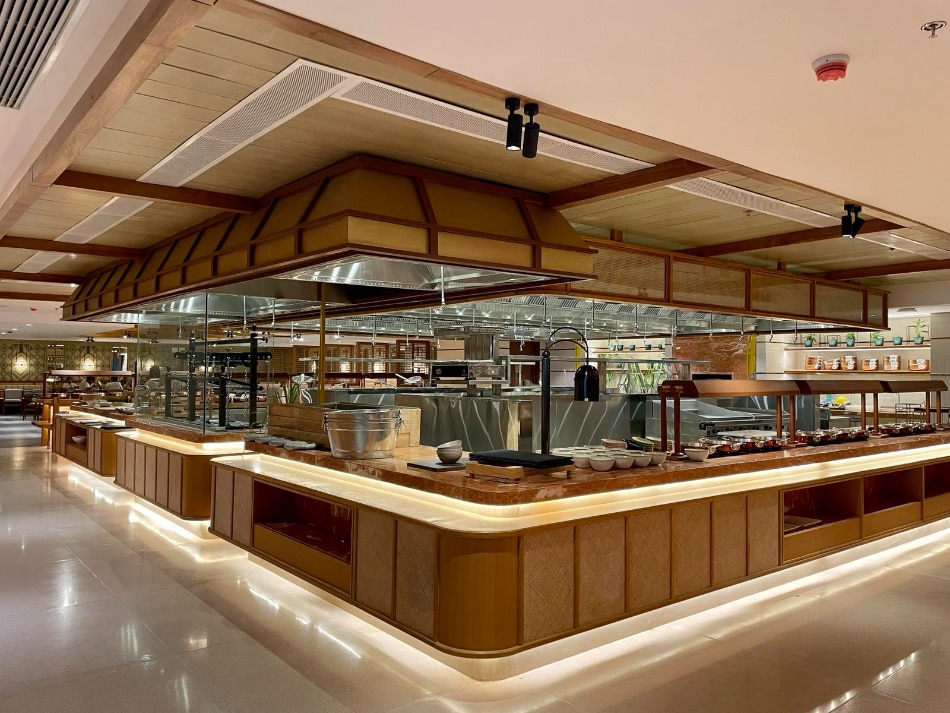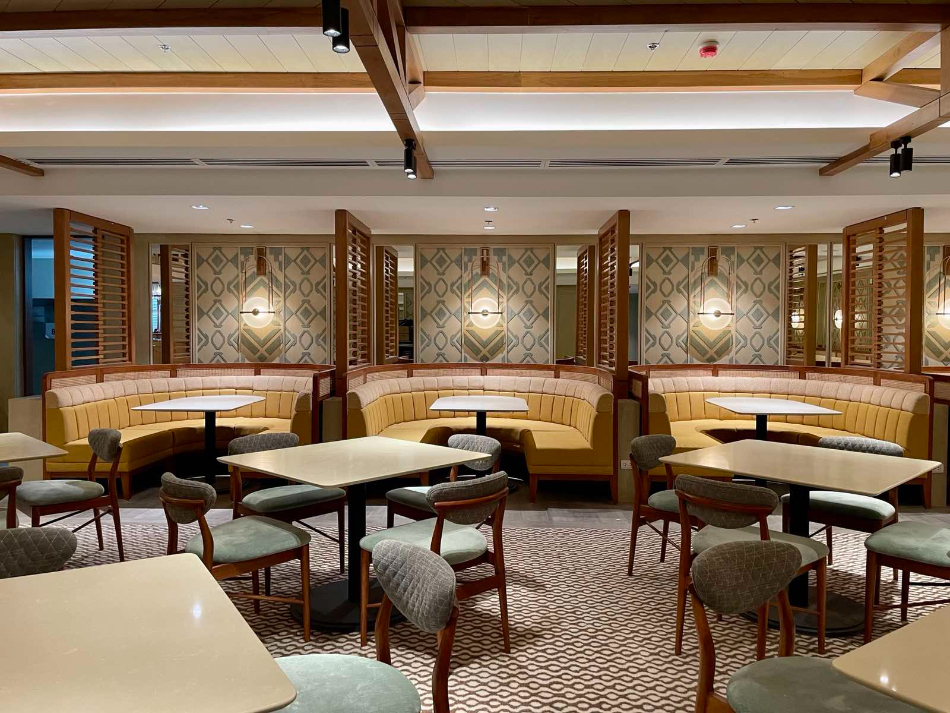The latest to open in Cebu’s hot new resort destination Nustar is an ambitious buffet-dining concept called Sinag by Fili. Located at the resort and entertainment complex’s Fili Hotel, the 340-seater all-day-dining restaurant puts Cebuano culinary traditions—the lechon, the sutukil, the pungko pungko—in a luxury hotel setting and showcases them alongside Filipino favorites and staples from Korean and Japanese cuisines.
In charge of the wealth of buffet offerings is 40-year-old chef Martin Rebolledo who cut his teeth in the kitchens of Wynn Macau (he was part of the opening crew in 2006) and the Sofitel in Manila. He is also behind the delightful Filipino fare at the five-star hotel’s Fina, where the barbacoa is excellent and where it’s possible to have a breakfast of garlic rice, pork humba slices, Cebu longganisa, danggit and boiled egg all in one À la carte plate.
At Sinag, he is most looking forward to sharing his unique take on the Cebu lechon—roasted on site and involving another icon from the city, the Cebu mango. Green mangoes—also a natural tenderizer for the meat—find its way to the marinade and stuffing for the pig, together with ginger and lemongrass. The formula, says Chef Martin, promises to boost all the good flavors and delicious aroma of the roasted pig. Will his lechon be the reason people will keep coming back to Sinag? We’ll have to see.
Meanwhile there’s still the pungko pungko station, dedicated to various Cebu street foods traditionally sold in the city’s stalls and consumed by customers while seated—pungko means to sit in the Visayas—in low benches. The sutukil station, for its part, comprises three great pre-colonial cooking methods. If you’re not familiar, sutukil is three words in one: 1) sugba, which means to roast or grill, 2) tuwa, which means to stew, and in Cebuano usually results in linarang or tinola, and 3) kil, or kilaw, a method that brings out the bright, lovely flavors of raw meat, usually seafood, by marinating it in vinegar. Chef Martin says these methods should best showcase the wealth of fresh seafood options from around Cebu.
All these treats and more can be enjoyed at Sinag for breakfast, lunch and dinner, in a modern and elegant setting that’s as cooling and calming as the view of the Cebu Strait that can be enjoyed from the restaurant’s Al fresco area. (It’s grand, too, boasting 1,300-sqm of dining—and cooking!—space.) The interiors take the outside in via the use of muted corals and ocean blues, sea greens and light gold appearing in textured walls and luxurious custom furniture (all Philippine-made, of course). It’s an environment that promises to make buffet dining in the Queen City of the South exciting, if not pleasurable.










